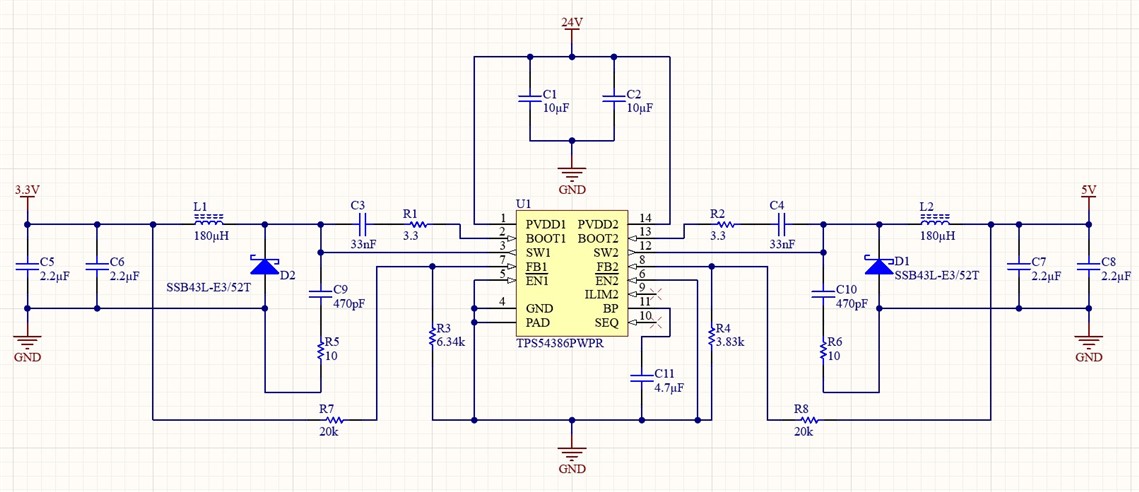Other Parts Discussed in Thread: TPS54386
I was taking a look at the power regulation circuit on our PCB because I needed to decrease the footprint and I noticed that it had been significantly over-designed. It looks like whoever designed the circuit originally just copied one of the reference designs and called it a day, even though it did not match our specifications, so I went ahead and did the math necessary to redesign it. The catch is that our expected current draws are very small; on the order of 100-200mA per output, so the math gave me results that I'm not sure are correct. Does the following schematic make sense or am I missing something? The circuit takes 24V in and outputs 5V @ 155mA and 3.3V @ 100mA.

As a final note, I am aware that the TPS54386 is overkill for our design; unfortunately we've already consigned parts for 1000 production units so we're stuck with it for at least a while.


